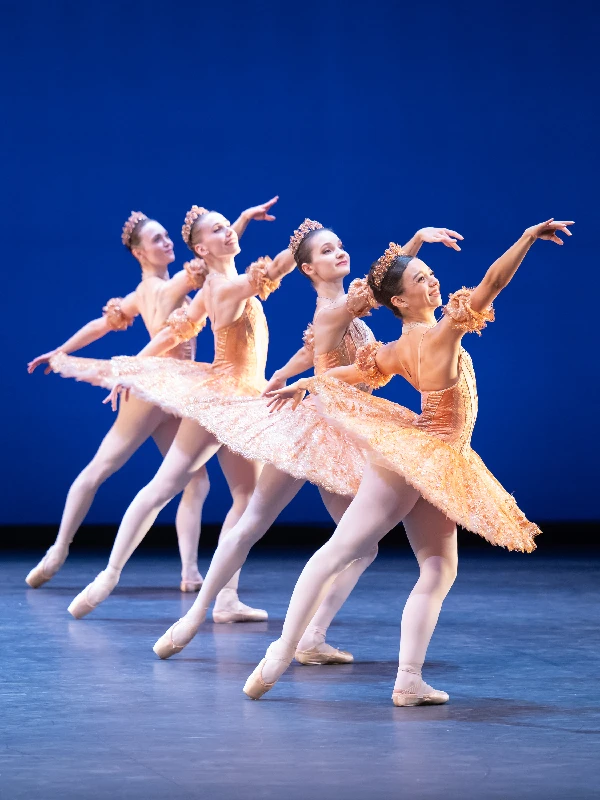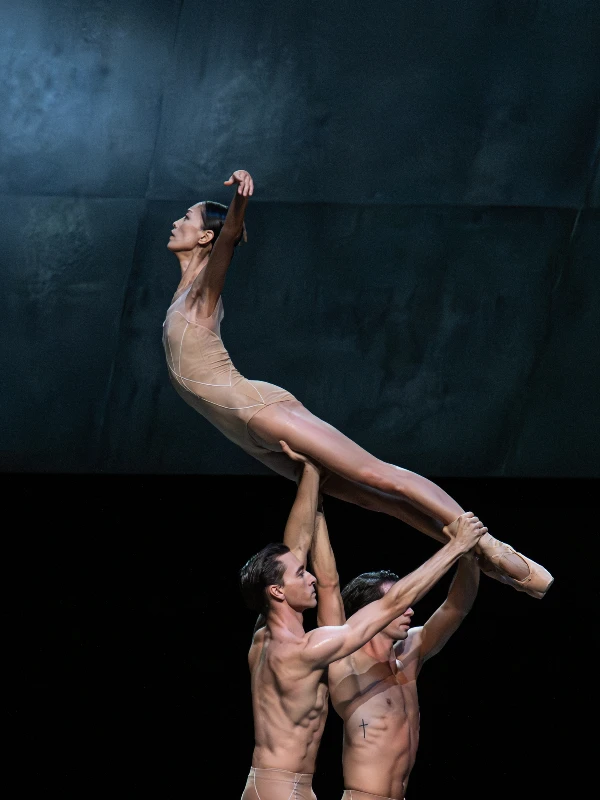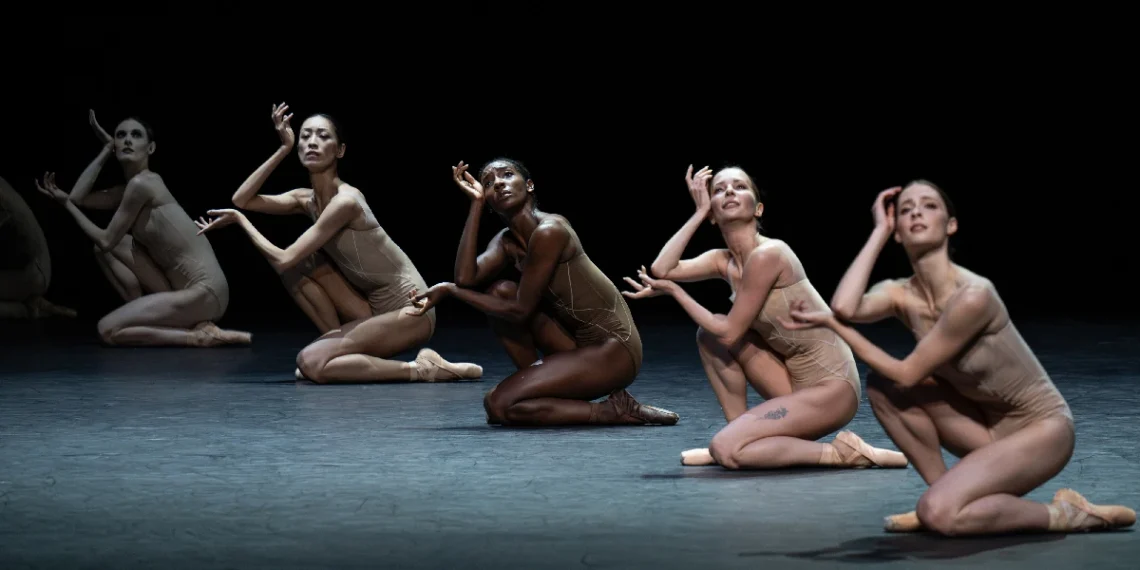English National Ballet R:Evolution Review
October 1, 2025 | Sadler’s Wells Theatre – London, England, UK
If you want to watch a ballet that will stay with you on the journey home, into the next day and beyond, this is the one. An exquisitely well-thought out and ordered programme that contributed as much to its success as the phenomenally talented dancers who performed it.
This evening, I am a relaxed amount of early giving me time to watch and listen to the orchestra warming up in the pit. The programme is densely packed with in-depth information, and we prepare for English National Ballet R:Evolution to take us on a diverse journey from the 1940’s to the present decade.
You may also like...
NYCB All Balanchine II Review: A Curated Homage to Excellence
The NYCB All Balanchine II program offers the audience a journey from neoclassical elegance to modernist abstraction to Americana flair.
2025 Fall For Dance Review: Wild Dancing in Midtown Eclipses A Holy Duet
This 2025 Fall For Dance review of Dog Rising, RESURRECTION, and IMPASSE explores whether overpacking choreography is a tactic to cover up a lack of direction.
English National Ballet R:Evolution Review
The curtain lifted on a dazzlingly clear and bright stage. Dancers in classical stance are spaced across the stage; corps de ballet females in gorgeously ornate blush-coloured tutus and demi-soloists in ivory supported Guest Principals Alice Mariani and Ricardo Castellanos. Three glittering chandeliers hung above the dancers, setting a very welcoming opening scene.

George Balanchine’s choreography for Theme and Variations, as always, is clean, sharp and pleasingly eye-catching, with inspiring surprise moments along with innovative and unexpected lines.
Although it is a rich, classical work without narrative for the audience to simply appreciate and enjoy, the orchestral music easily suggested a narrative of its own and perhaps could suit many choreographies.
A fabulously impressive promenade section brought power and unity to the stage,as the joyful work drew to a close. The ballet proved to be a great way to present the company.
Whilst this wasn’t to my own taste, Errand Into the Maze, created in 1947 by Martha Graham at the height of her obsession with heroic women of Greek mythology, worked very well in tonight’s programme.
Emily Suzuki and Rentaro Nakaaki both debuted this evening, bringing great energy to their respective roles of The Woman and The Creature of Fear.

Suzuki was expressive in repetitive movements, drawing out percussive elements in this disjointed and unconventional score which supported the dramatic interaction between the two characters.
Nakaaki displayed impressive strength; a bone-staff across his upper back for the entirety of the piece (at times accompanied by The Woman), there was plenty to admire in the symbolic choreography.
Errand of the Maze encompassed many flavours and sounds and was very well-received by the audience.
Having seen English National Ballet perform William Forsythe’s Herman Schmerman before, I sat back to enjoy the Quintet.
It was just as bright, jangly and playful – yet extremely complex – as I had remembered; the dancers were joyful to watch as they exploded across the stage, spiky and fluid all at once.
The contemporary ballet is fabulously quirky and attractive to watch, especially embracing Forsythe’s signature play taking dancers off their centre point of balance, which is extremely challenging for classically-trained dancers!
The returning themes in both the music and choreography are punctuated with breathtakingly energetic and unpredictable moments that keep the eyes busy.

Saved for the third act and mesmerising from the very first second was David Dawson’s Four Last Songs.
Soprano soloist Madeleine Pierard, whose rich and emotive voice delivered all four of the songs – Spring, September, Time to Sleep and At Dusk – came onstage in a beautiful black evening gown to receive applause at the end. Earlier, she had offered pre-performance insight:
“I consider the Four Last Songs to be an exquisite and intensely intimate moment in Strauss’ inner life as he processed his own ‘sunset’.”
It’s almost impossible to imagine another costume working in the way the dancers’ minimalist foundation garments did. Even their costumes spoke: of simplicity, of oneness, of a complete circle going back to the way we arrived in this world.
Every one of the dancers in Four Last Songs stood out and manifested exceptional deep joy and sorrow through their incredible technical ability, expression and gesture.
Dawson himself said he returns to Strauss’ music when feeling lost or defeated and he illustrated this journey so movingly through his choreography.

There were beautifully-timed lifts ascending with the music’s crescendos, arched female backs above the outstretched supporting arms of their partners.
There were group moments – many partnered moments – that were so visually stunning. In one particular moment, all twelve dancers were coupled at the same time, female dancers sat facing backwards on their partners shoulder and carried off the stage in a row.
Sensations of loss or yearning swept throughout this piece. But it was not unhappy; it was full of gracious love and acceptance of finality, very cathartic and emotional.
The unique scenery – a tilted low ceiling overhead, clouds in a dark sky beyond it – contributed to a wholly intimate feeling embodied by both the music and the choreography. This feeling swam across the whole piece, sweet, romantic and full of rich gesture. The dancers’ deep and lusciously expansive work flowed continuously.
When the curtain fell on the final male dancer left on stage, after he ran arm outstretched around and off, I couldn’t help but think that I’d like to watch this again and again.
Featured Photo of English National Ballet Dancers in David Dawson’s Four Last Songs. Photo by ASH.










